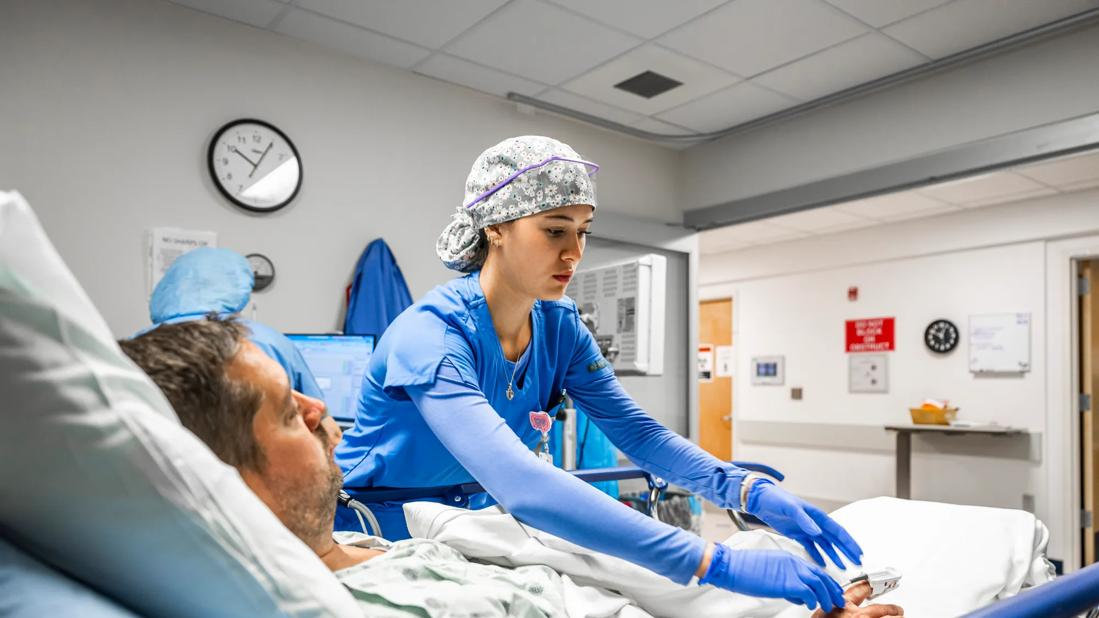A new project helps standardize technology workflows and improve the risk stratification process

Picture yourself as a patient who decides to become proactive with your health after a heart attack. You learn about the importance of colorectal cancer screening, call to schedule a colonoscopy and complete all of the prep. Then you arrive at your appointment, only to have the clinical team determine that due to your medical history, you need to reschedule the procedure at a hospital location.
Advertisement
Cleveland Clinic is a non-profit academic medical center. Advertising on our site helps support our mission. We do not endorse non-Cleveland Clinic products or services. Policy
The GI Optimization project sought to prevent these unnecessary cancellations by implementing standard technology workflows. Leveraging electronic health record (EHR) software, clinical best practices guide ordering and scheduling to ensure patients receive the same safe, high-quality care across the health system.
A multi-disciplinary group of providers and clinicians from the Anesthesiology Institute, Cleveland Clinic Community Care and the Digestive Disease & Surgery Institute collaborated to develop a risk stratification process, creating a matrix of clinical criteria that drives patient scheduling. A patient’s medical history and diagnoses determine:
Quentin Jamieson, Program Administrator for Endoscopy Operations, served as an operational leader on the project. He says, “We worked with many Information Technology teams to embed this risk stratification into the electronic health record and bring our vision to life through existing EHR tools.”
A set of standard endoscopy procedure orders replaced the 80+ different ordering methods used by providers across Cleveland Clinic’s northeast Ohio, Akron and south Florida locations. Providers now answer risk stratification questions within these orders, which include relevant patient data from the chart to assist in decision-making.
Advertisement
In situations where the risk stratification process does not indicate a need for anesthesia, providers can request a Pre-Anesthesia Consult Clinic evaluation directly from the order, based on their clinical judgment.
External referring providers submit a request form that uses the same risk stratification questions. These referrals are then transcribed into the EHR as an order for scheduling.
The standard procedure orders enable every scheduler to book at all endoscopy locations, which enhances patient access and enables 24/7 “first-call resolution” through Cleveland Clinic’s Appointment Center. Previously, these appointments could only be made by surgical schedulers with specialized training.
Risk stratification is also embedded into scheduling workflows to help schedulers select the right facility, pre-procedure testing and pre-anesthesia evaluation for self-referred patients.
Additionally, providers can schedule a screening colonoscopy on behalf of their patients while they are still in the office, directly from the signed order. These orders also trigger a “scheduling ticket” to the patient portal so they can book online at a facility with the necessary acuity level at their preferred date, time and location.
Work will continue to enhance the risk stratification and order process, including standardization of bowel prep instructions. According to Quentin, the EHR presents many opportunities for future enhancements. “This level of standardization improves our reporting capabilities, which will help us better utilize appointment slots and procedure rooms. Next, we will be able to standardize fee scheduling and offer greater price transparency. Lastly, we can use these tools for bulk order placement and patient self-scheduling capabilities.”
Advertisement
Advertisement

Retrospective study highlights psychosocial predictors of bariatric surgery outcomes

Radiation to the pelvis from cancer treatment made the traditional treatment path unavailable

Greater awareness among young patients is needed

Combining RFA with stenting improves survival rates, reduces post-ERCP complications

Poor response may be due to different tumor biology

Study sheds light on distant metastasis rates between upfront surgery and Watch & Wait strategies

Findings help close the knowledge gap around VTE practice patterns

Nationwide research underscores the importance of individualized treatment